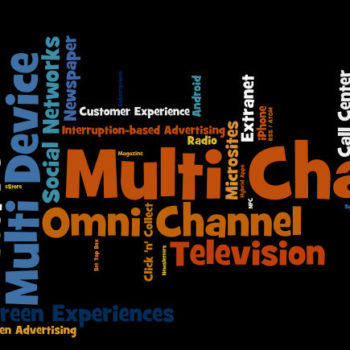The New Possible in Attribution
by Hugh Williams on 14th Feb 2018 in News

In an omnichannel marketing world, customers are engaging across any number of devices: viewing ads, visiting websites, and conducting searches. Here, Amelia Waddington, director of data science & analytics, Acxiom (pictured below), explains that as a result of this marketers have become more reliant on multi-channel attribution models to track these movements over the last few years. These models help them understand the kind of impact each online marketing channel contributes to online sales, how effective campaigns are, and how the different channels interact with each other. They also help attribute revenue to each channel and calculate return on investment (ROI), an essential indicator on how to allocate future budgets.
There is, however, one main problem that exists: multi-channel attribution does not usually take into account offline sales and offline marketing. Being able to distinguish which real world or digital marketing touchpoint contributed to a final conversion is key to understanding what is working, and, more importantly, what isn’t working.
Offline attribution allows brands and marketers to combine digital efforts with the in-store foot traffic that make up the majority of purchases. This is especially important when considering that marketers are now spending more on digital media than other traditional media. As technology has improved, brands have been able to finetune their online targeting and messaging to reach the right person at the right time. But there is still work to do around bringing this sophistication to customer journeys that end in-store.

Amelia Waddington, director of data science & analytics, Acxiom
That’s why many leading brands are now looking to invest in new technology that links together online and offline channels, while partnering with the right specialists who can build advanced attribution models, to see how all channels work together over different-length purchase cycles and the many interactions to drive sales. Accurate attribution should be a key driver in how we optimise marketing campaigns, tying them back to revenue and other KPIs.
UMIA
Due to the plethora of attribution and tracking tools available, it’s technically possible to track everything across all channels, although some platforms are selective about releasing their data. However, while the advancement of attribution is an exciting development, there are still many limitations on accuracy and each approach has its own strengths and weaknesses.
Experts agree that an approach that unifies traditional macro-level marketing mix modelling with more granular digital attribution will help to resolve some of the discrepancies in measurement that often occur when different approaches are deployed independently. Forester refers to this approach as 'unified marketing impact analytics' (UMIA). However, in practice, this requires not only skilled data scientists to implement the methodology, but also identity resolution capabilities to link individuals across devices and offline.
Avoiding the duopoly
Google and Facebook have both released API’s that allow retailers to combine their offline data with their undisclosed identify graph, but, understandably, many do not want to share their valuable data with the tech giants. The choice for those brands is now between specialist attribution companies and building out in-house capabilities. With the challenges experienced hiring and retaining data science talent in today’s market, either option comes with a hefty price tag.
Things get even more complicated when companies do not have direct access to customer-level sales data. FMCGs and other manufacturers that sell their products through supermarkets or other retailers, are increasingly looking to access the sales data that holds the answers to their attribution questions. Recognising this as a supplementary revenue stream, retailers are increasingly open to sharing this data through analytical partners who also provide the data science knowhow to bring it all together.
This is an interesting time, as many companies attempt to bring together the data and apply the right science to the problem; methodologies will converge and best practices will be established. The next race will be productisation and automation.
attributionecommerceIn-storeTechnologyWebsite








Follow ExchangeWire